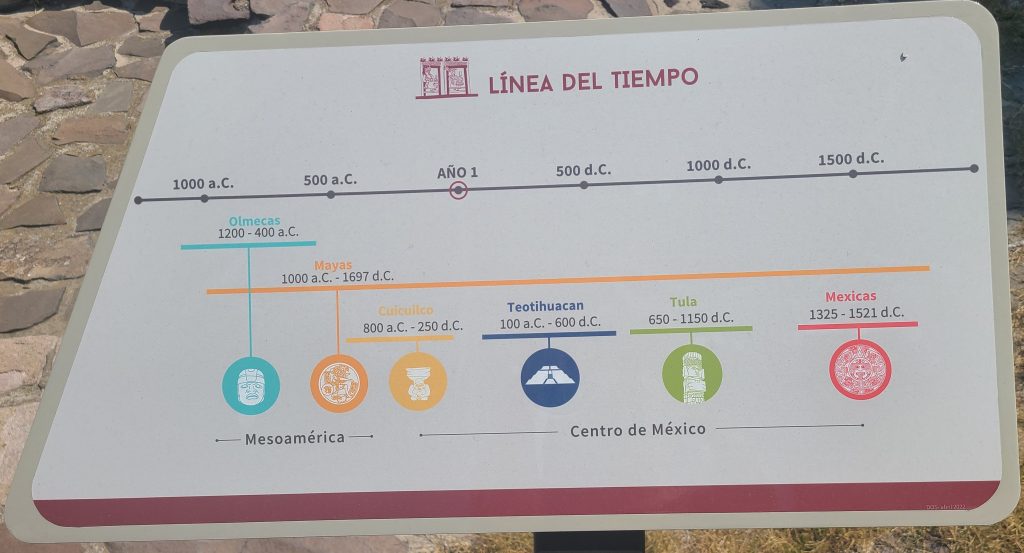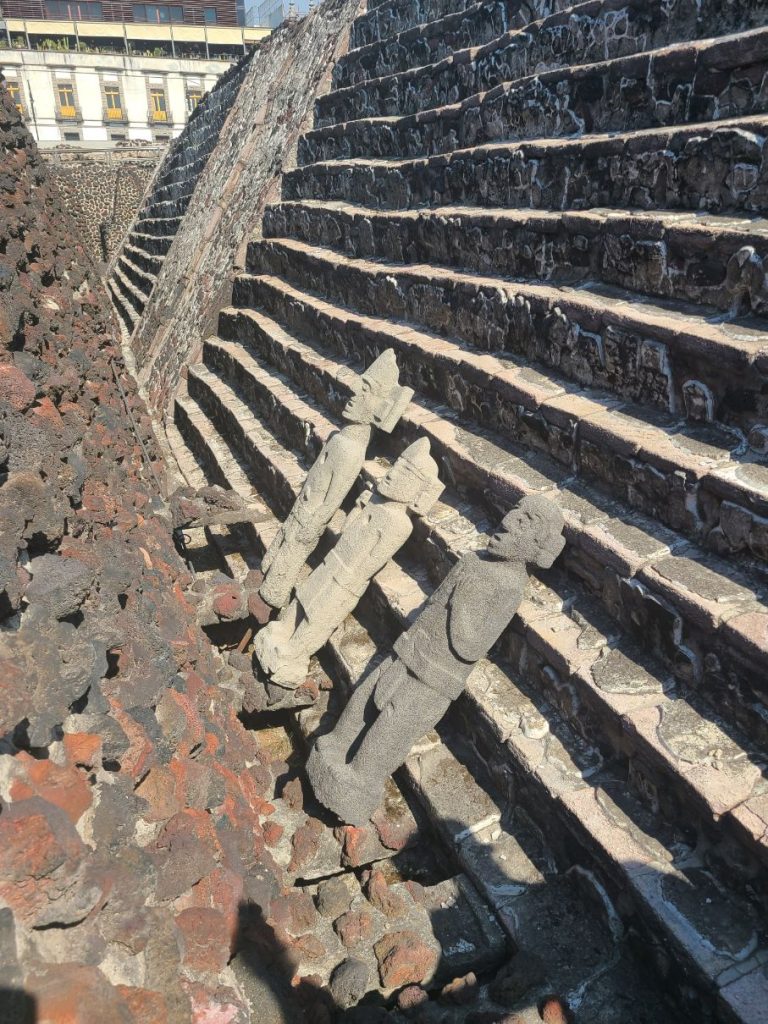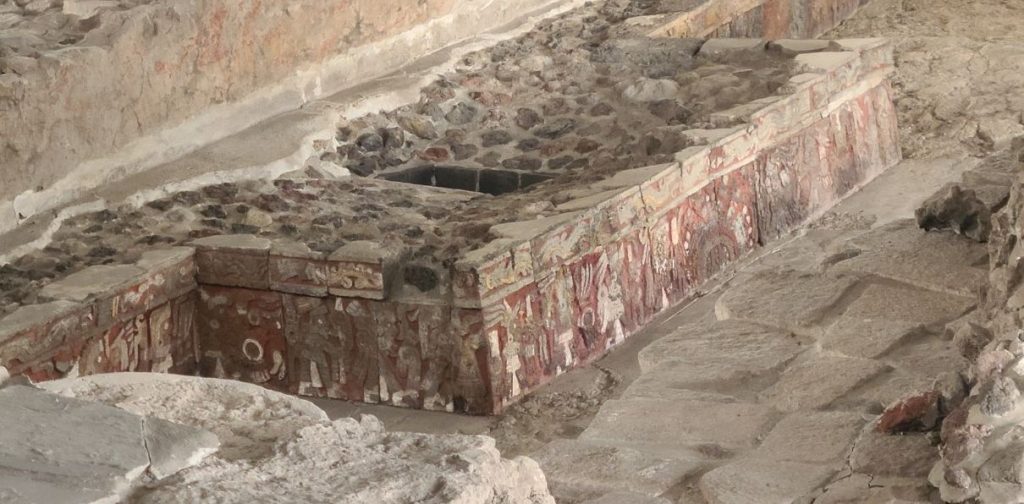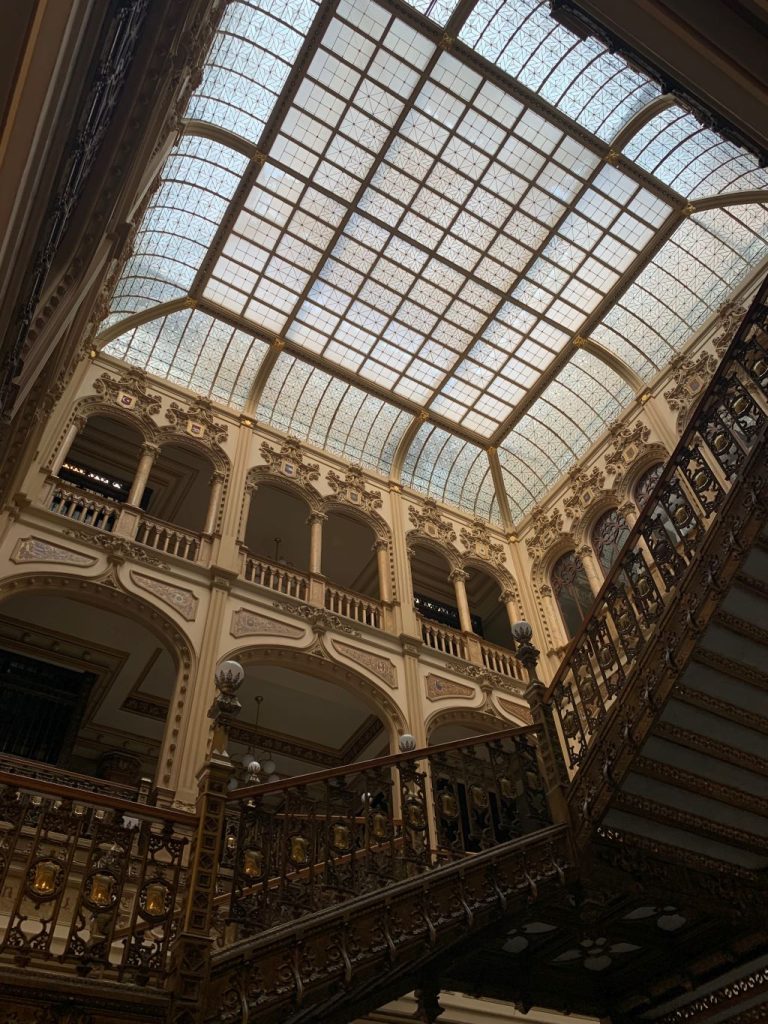(You can read Part 1 at https://temafrank.com/magnificent-mexico-city-part-i/)
Zocalo & Templo Mayor

When you dig to expand a subway or install a parking lot in a city like Mexico City, which has been inhabited and a centre of power for thousands of years, you invariably find traces of earlier times. The Zocalo, the main plaza at the centre of Mexico City is no exception. The Cathedral, for example, sits atop ancient pyramids. But it wasn’t just the Spaniards who built on top of their predecessors. Generation after generation, civilization after civilization, stole rocks from and/or built on top of what had been the monumental buildings of those they replaced. Mexico City is still striking a balance of excavating while keeping the core of the city usable today.

The Zocalo and the streets around it also formed the central plaza of various pre-colonial civilizations. There are layers of temples buried beneath the plaza, the Cathedral, and many of the other buildings nearby. The Templo Mayor site has excavations showing remnants from several different eras. There were seven temples built on top of one another here.

Here you can see layers of pyramids. New rulers would expand by building another set of stairs in front and over top of previous ones. The space between could be used as chambers for offerings to the gods. (Including, sometimes, humans who were buried alive in those spaces. More on that in Magnificent Mexico City: Part 3, coming soon.)
Fun fact: Mexico City was originally an island, surrounded by a huge lake. The pre-colonial civilizations created plots of farmland separated by canals. You can still see some of the canals in the district of Xochimilco.

Little is known about the first temple because the high water table of the old lakebed makes it impossible to excavate. The subsequent temples were constructed between 1375 to sometime before 1519, when the Spaniard, Herman Cortes, and his troops came and sacked what was then known as the city of Tenochtitlan. Even Cortes wrote at the time how impressed he was by the size and magnificence of the temples at Tenochtitlan. They were opulent and richly decorated.

Since the city was built on such soft, muddy land, it is not surprising that there has been a lot of subsidence over the centuries. This is evident when you look at the temples: those pictures aren’t crooked – parts of the buildings are sinking. You see evidence of this in some of the more modern buildings in Mexico City as well.
(Click the arrows or swipe right to advance the slides)
As if the mushy lakebed wasn’t enough of a building challenge, this is also an earthquake zone. The city suffered a major earthquake (over 8 in the Richter scale) in 1985. Some 400 buildings collapsed and thousands of others were damaged. You see many buildings with cross-bars reinforcing them now, as well as others still standing but too dangerous to occupy.
I continue to be entertained by the pre-Columbian art.
The Postal Palace
After touring the Templo Mayor, we wandered over to the Postal Palace. Although I’m fascinated by the pre-colonial art and architecture, I’ve got to admit that the colonists also built some mighty fine buildings.
There will be more Mexico City posts to come, as there is still so much to see and do in this incredible place. Click here to read Mexico City – Part I






























[…] More from Mexico City coming soon. Here’s the 2nd installment of my Mexico City series. […]